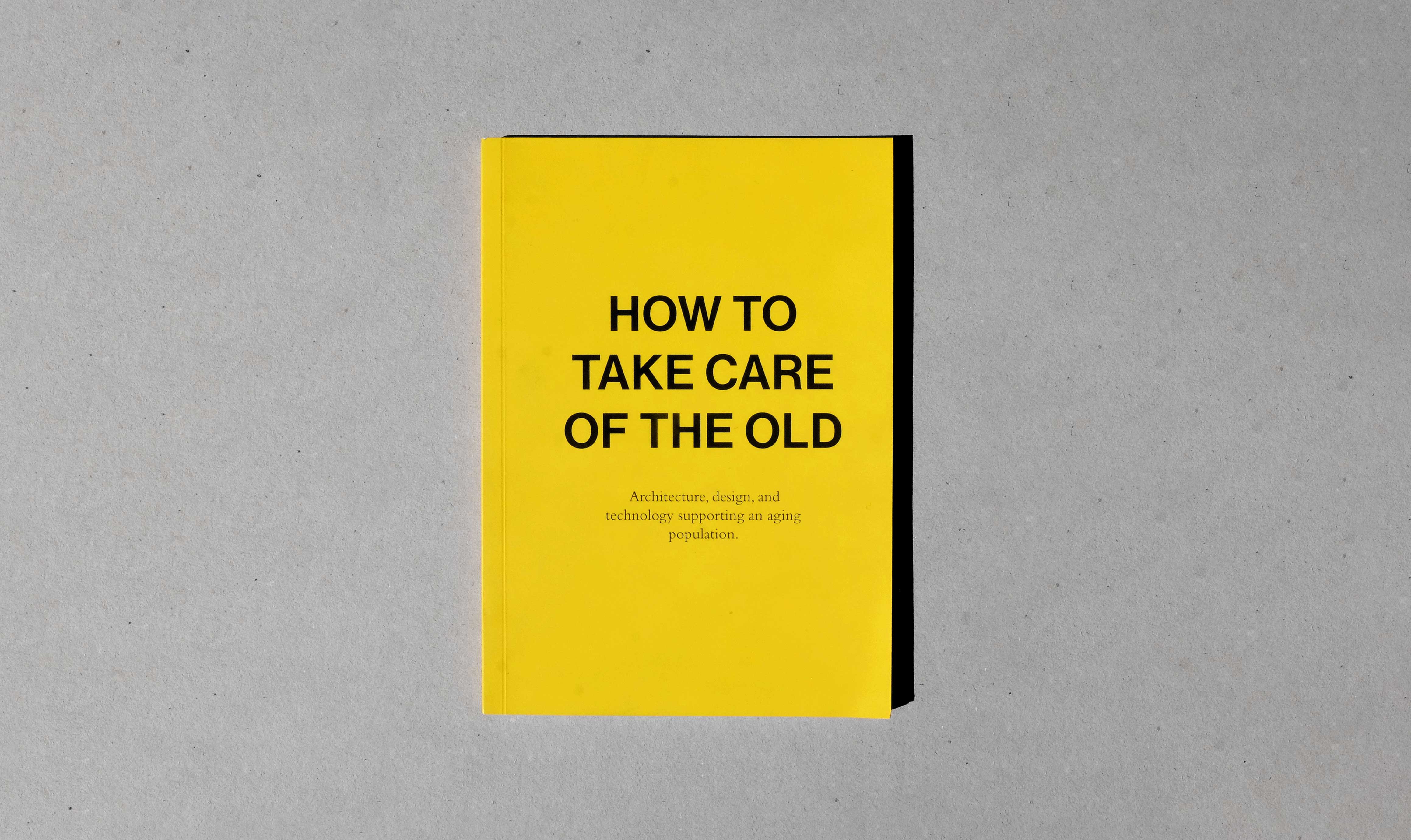The concept of aging successfully has become increasingly crucial as statistics predict that the total number of individuals over 65 is projected to nearly double before 2050. The urban environment directly impacts the engagement profiles of older adults, and it is necessary to provide spaces designed to match the needs of the elderly. Based on my mother’s concerns and anticipations of her future, this book investigates how architecture, design, and technology can be age-friendly, mitigating some of the losses that come with old age.
The paper raises the implications of a current worldwide ageing population phenomenon. Through primary interviews and cross-disciplinary research Lonardi analyses how growing old is perceived nowadays and which tangible and theoretical solutions our modern society offers. He identifies three main common areas of vulnerability, particularly acute in old age. The three topics took into consideration the physical and mental health, and the relationships between generations, specifying for each macro-domain how architecture, design, and technology are tackling the related issues. As the lowest common denominator, Adalberto found two critical elements to take in consideration.
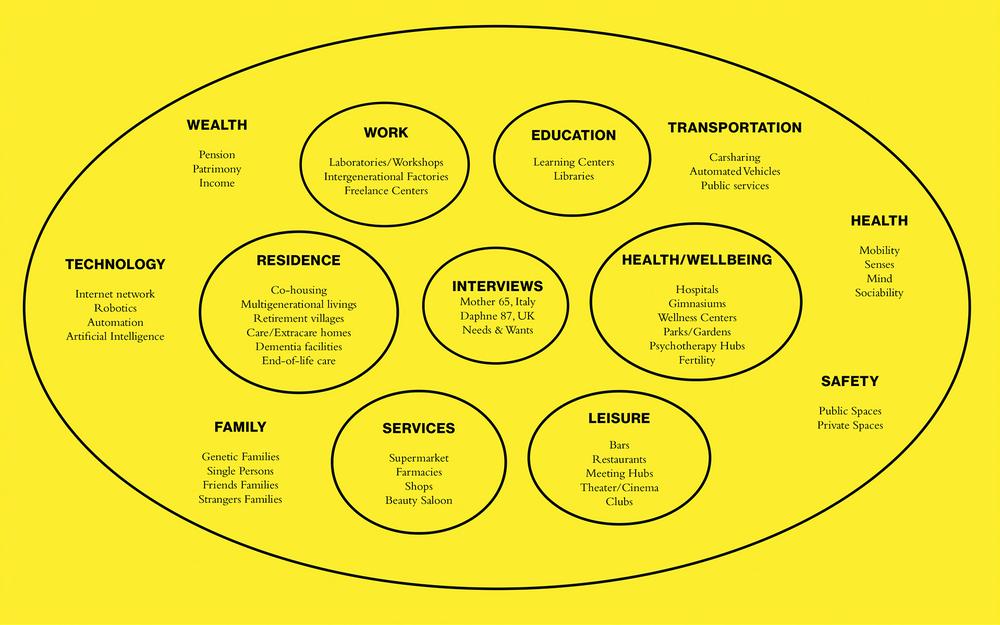 How to take care of the old – Publication Table of Content
How to take care of the old – Publication Table of Content
The first one is the relationship between elderly and technology. Many elderly people may be already able to leap over the difficulties of digital, technical activities, accepting their ‘companion’ devices as members of the family or friends. However, one of the biggest challenges is to help older adults to trust new digital companions and assistants. A ‘trusting technology’ movement needs to be constituted. The main problem is that, although the designs and facilities are available, they are often psychologically or emotionally alien to older people due to lack of knowledge or experience. To redeem these useful and sensorial additive devices, designers need to consider products’ education, training, and familiarization. Designers need to find successful and friendly interfaces that make especially over 65 Baby Boomers trust what they may judge as ‘machines’ or ‘toys,’ although this problem will soften as the successive generations - X, Millennial and Z - will get older. Indeed, knowing how to communicate through technology is critical in a modern global age where families and friends might be living at distances and traveling is more accentuated. Learning to live with ‘robots’ and Artificial Intelligence may become a vital part of growing old soon with some comfort - mental and physical - both for the individuals themselves and their carers.
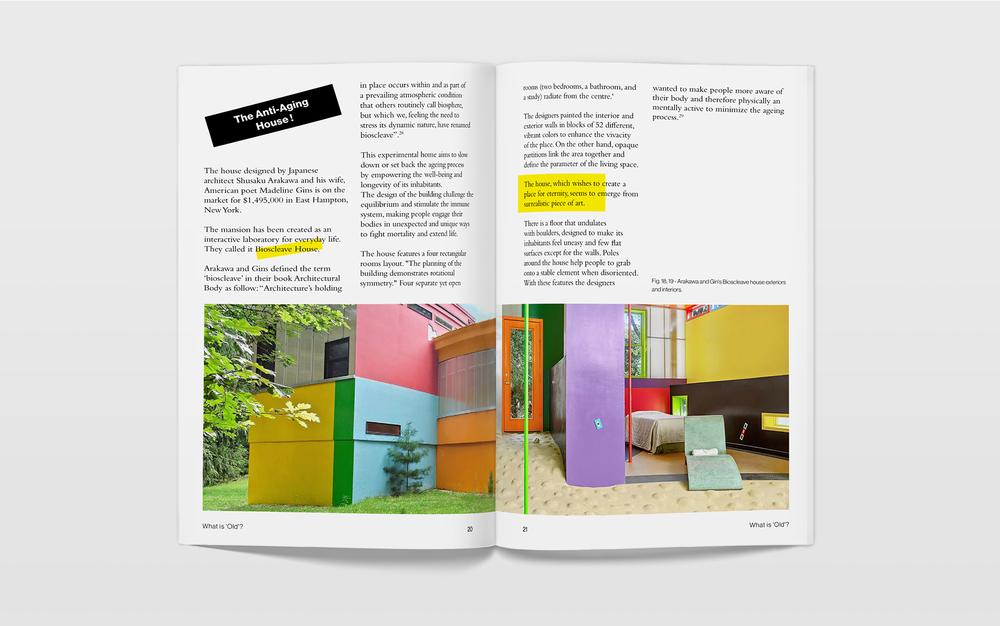 How to take care of the old – Interior spread about the \"Anti-ageing House\" by Shusaku Arakawa and Madeline Gins
How to take care of the old – Interior spread about the \"Anti-ageing House\" by Shusaku Arakawa and Madeline Gins
Secondly, the necessity to be involved in the community and how aged adults can be brought back in touch with young people is vital to avoid isolation and discrimination. One of the problems for older people in planned communities is the lack of contact with the younger ones and the fear of a ‘ghetto’ atmosphere detached from the usual mixture of ages. This situation becomes more acute when we take into consideration people with dementia or elderly ones living in the countryside - although automated electrical vehicles could be a solution.
As a result, there are ways of designing the physical environment to bring old and young people together with each other - the experiments of creating intergenerational and open communities within the metropolis seem particularly valuable. The importance of recreating the Italian ‘Cascina’ environment within the city becomes critical. Adapting to shared communal spaces with others - family, friends, or even strangers - might be a necessity for the majority of the young and old population that can not afford private housing. This action will not necessarily mean to lose self-independence. Instead, it might mean to be open to new ways of living and design new typologies of building, extensions, or conversions that can support the communities to stay together. Under different circumstances, nursing homes’ accommodations which tend to be generally depressing, will need design thinking that makes them less so, arguably reminiscing somehow of the tenants' heydays and equipped with the most advanced smart-home technologies.
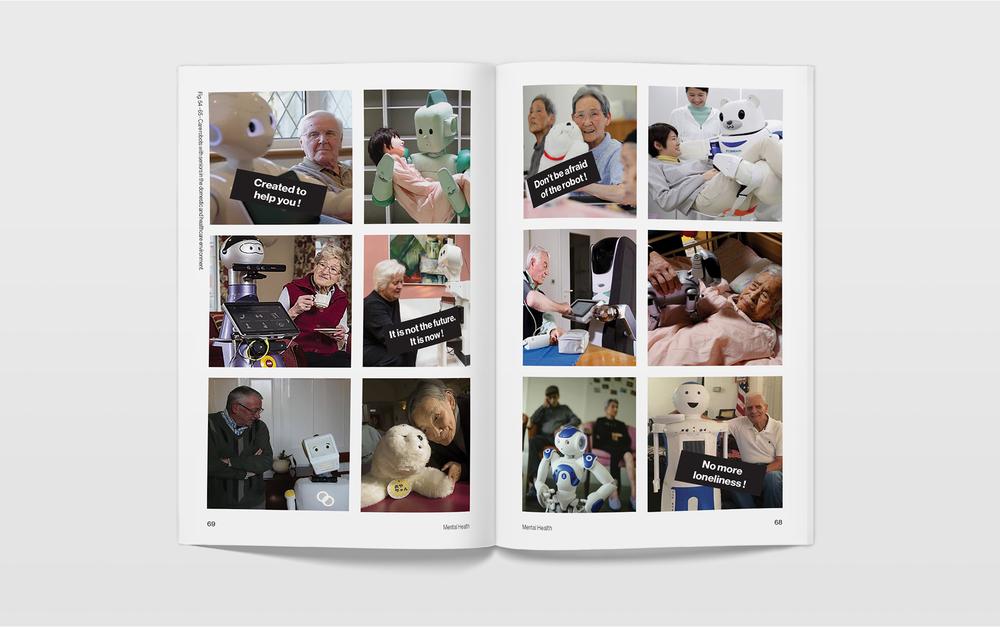 How to take care of the old – Interior spread about care robots in the technology market
How to take care of the old – Interior spread about care robots in the technology market
A significant change needs to be executed at a larger scale level in guiding and planning a re-conceptualization of communities and the whole of society. While solutions from the future such as robotics and Artificial Intelligence might be embraced and implemented with the analog side of our society, social and architectural archetypes from the past should be revisited and upgraded to revive in the modern world.
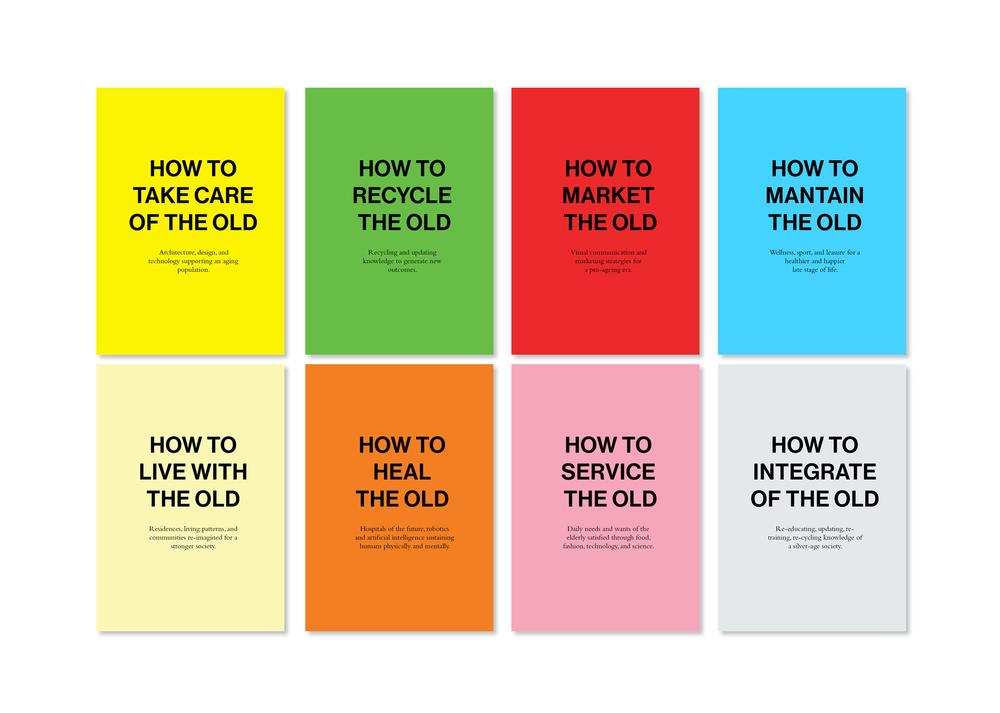 How to take care of the old book and series of future publications about a better later life
How to take care of the old book and series of future publications about a better later life
Designing for the elderly engages a lot of levels of thought and implementation - not only ingenious re-design but a sensitive and empathetic understanding of the situation of older people and their specific disadvantages in flourishing in an increasingly digital culture.
Read How to Take Care of the Old here.
